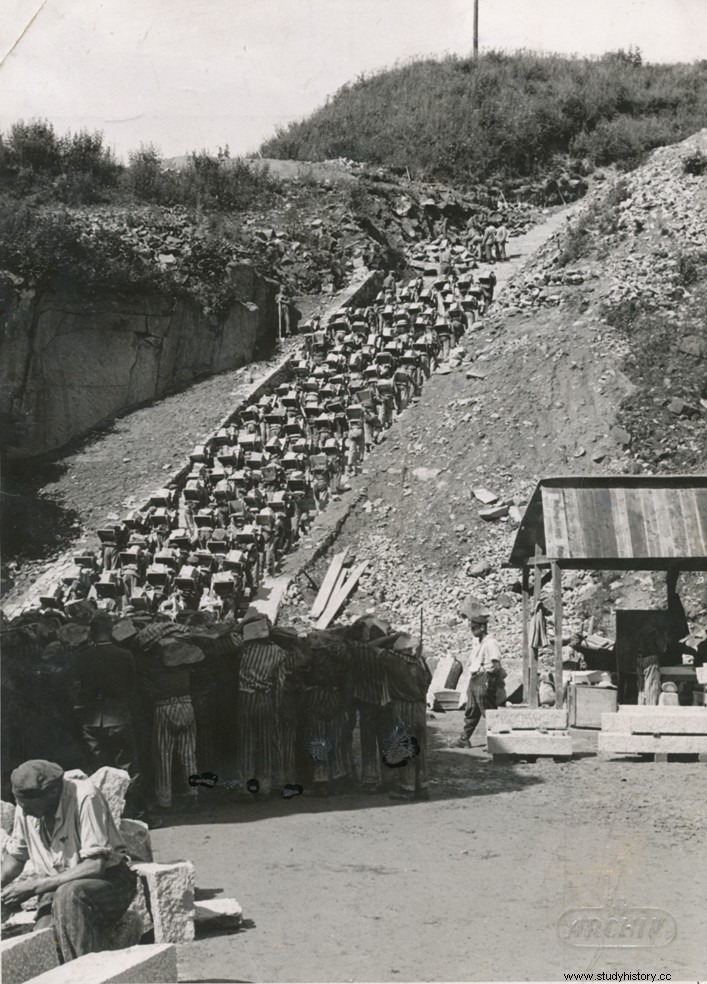The Nazi party came to power on January 30, 1933. It took less than two months for Adolf Hitler and his supporters to open the first two concentration camps of the hundreds that would follow.
As a revolutionary movement with totalitarian pretensions, the Nazi party had to put an end to anyone who prevented them from building the utopian society they wanted to create. On March 21, 1933, the Oranienbumg concentration camps, 35 km north of Berlin, and Dachau, near Munich, were opened. At first, the two paramilitary organizations of the Nazi party had the power to create and administer concentration camps. In this way, Himler's SS took over Dachau and Röhm's SA took over Oranienburg. Since 1934, after the night of the long knives and the consequent fall from grace of the SA, only the SS ran concentration camps and finally in 1942 it was this organization that created the extermination camps.

Although German concentration camps are often associated with the extermination of the Jews, this was only part of their goal and by no means the first. At first, the concentration camps focused on ending the political opposition. The repression focused on leftist movements, especially the Communist and Social Democratic parties. Jews will begin to be sent to the camps for the simple fact of being Jewish from November 9, 1938, the well-known night of broken glass . Finally, in 1942, the 6 extermination camps appeared, dedicated to the elimination of European Jews, although gypsies were also systematically eliminated.
What were concentration camps used for
It is usually common belief that concentration camps were prison facilities where inmates were locked up and where sooner or later they died of hunger, beatings or disease. Although the ultimate goal was to kill off the inmates, the way to kill them is not just mistreatment, but to eliminate them they were exploited as slaves in the factories of German companies, both public and private.
This was a sweet deal for the Reich, as prisoners were rented out through the SS business office and only factories considered vital to the war were supplied with this labor, as there were no free laborers available to hire them. cover all the required jobs.
The inmates of the camps were assigned to any job imaginable, from the military industry, through construction, agriculture or mining. The prisoners were used for any work imaginable, since it was only a labor force. Due to the poor living conditions in the camps, for each job it was necessary to assign 3 prisoners to maintain a certain level of productivity.

What structure did the concentration camps have
Another general belief about concentration camps is that they are just a prison facility at a certain point on a map. This is not like this. When we hear the name of a concentration camp like Auschwitz, Sachsenhausen or Bergen-Belsen, this only names the name of the headquarters and the main camp.
A German concentration camp had one or several main camps and dozens of subsidiary camps that depended on a central one. It would really be like a small country, with a capital and towns that depend on that capital. Therefore, when we hear the figures of prisoners in a concentration camp, we must bear in mind that these people were spread throughout these facilities.

What is the difference between a concentration camp and an extermination camp
Because the German camps were intended to kill hundreds of thousands of people, the terms concentration camp and extermination camps are used interchangeably. However, there is both a historical and a practical difference between the two.
The concentration camps existed from 1933 to 1945 and their objective was to end the lives of the inmates by taking advantage of their labor force. The number of concentration camps is estimated at twenty, which in reality would mean hundreds of exploitation facilities for prisoners.
The extermination camps existed between 1942 and 1945. On January 20, 1942, the protocol called the "Final Solution to the Jewish Question" was signed at the Wansee conference, which sought a practical, cheap, efficient and industrialized solution to end European Jews. Other techniques had been tried before, but since they were crude, slow and used many resources, both material and human, it was decided to create 6 centers where millions of people could be eliminated.

The Germans knew nothing about the concentration camps
This is flat out false. The Nazi regime never hid the existence of concentration camps. German civilians knew their locations as they were always in the immediate vicinity of urban areas. Yes, it is true that the government always tried to hide what really happened in those places. Officially, the concentration camps were places of reeducation, where Germans who did not collaborate with the construction of the new National Socialist society were locked up to change their thoughts.
It is true that the German population in general was unaware of the existence of the extermination camps, since the SS tried to hide it at all costs. Today in Germany holocaust denial is a crime, measure taken to combat the legend that these places never existed despite irrefutable evidence to that effect.
